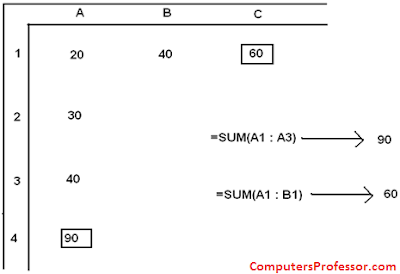

Please remember to mark the replies as answers if they helped. The reason why we recommend posting appropriately is you will get the most qualified pool of respondents, and other partners who read the forums regularly can either share their knowledge or learn from your interaction with us. You have more concerns about using macro, we'd like to post in the MSDN forum for Excel:
#Auto sum on multiple sheets for excel code
But this is just a logic, the code will perform very slow if data is large as the macro uses loops. If The formula will sum up C3 across each of the sheets from Jan to Dec. Your sum formula should now look like this SUM (Jan:DecC3). Add a closing bracket to the formula and press Enter. Hold Shift key and left click on the Dec sheet. General logic would be like looking for all cells containing SUM function, and then adding them up. Left click on the Jan sheet with the mouse. In theory, this is possible by using macro.

You can hold down and select multiple non-contiguous cells (e.g., “What was the total for Jan-07 and Jan-08?”).If all the auto-sum totals are the maximum value in Column B on Sheet1 to Sheet5, we may try using the formula below in your destination cell as a workaround, but this is not a flexible method: And, of course, you don’t have to drag a contiguous set of cells. Just right-click on the Sum= area on the status bar, and you will get a menu that lets you pick what you want math function that box should perform.Ĭhange it to Average, and, henceforth and forthwith (until you change it to something else), that area will show the average of any set of cells you select.

“That’s all well and good, Gilligan, but what if I want to see the average for these four months?” Chances are, you never noticed that, and yet it’s been industriously summing away every time you’ve highlighted a range of cells in Excel for years! Look down in the bottom righthand corner of Excel (if you don’t see this, select View»Status Bar): Let’s say you want to get the sum for January through April. (The formatting of this table offends my data presentation sensibilities in many, many ways, but it’s the default way that many people format tables, and I don’t want to detract from the core of this tip.) They’re totaled for you there (assuming you haven’t gone in and turned off the Status bar under the View menu, and, let’s face it, if you were that desperate for screen real estate, you really should be out shopping for a larger monitor rather than tooling around the internet reading blogs). The tip put really, really simply: Highlight the cells you want totaled and look at the bottom right of your screen. But, what if you are on the phone and discussing the data with somebody who asks, “What was the total from July through October?” You don’t already have that calculated, and you don’t really want to keep that calculation on the spreadsheet. The approach I just described is great if you actually want to keep the sum in the spreadsheet as a permanent calculation. If you immediately think of something along the lines of: “Click on an empty cell, hit the sigma icon, and then highlight the range of cells you want to sum and press ,” then this tip is for you. Question: What is the fastest way to get the sum of a small range of cells in Excel? This is one that I showed to a co-worker several weeks back as I was looking over her shoulder at a spreadsheet. But, doggonit, it sometimes amazes me how many really, really, really handy features of Excel most people don’t even know exist. Originally written by Analytics Demystified on May 22, 2008Ĭategorize this as the most tactical of Excel posts ever.


 0 kommentar(er)
0 kommentar(er)
